Today we will talk about what a lung burn is and how it is treated. Let's start with the fact that this type of burn belongs to the group of damage to internal organs. Thus, the course of the disease is quite severe and possibly entails serious consequences.
Damage to the mucous membrane of the respiratory tract occurs, which can occur as a result of inhaling hot steam or certain chemicals. In addition, a similar injury can be caused by radiation, then this is already a radiation burn of the lungs. As a rule, this injury is combined with burns of other organs of the respiratory system (for example, the nose, larynx or trachea). All burns are usually divided into two large groups:
But in any case, a person needs to urgently provide first aid. You will also learn how to do this from this article.
Classification Features
All types of respiratory tract burns are usually divided into 4 separate groups. You will find more detailed information on this matter in the table below.
| Group | Explanation |
| Damage to the lungs and bronchi |
The following factors contribute to the problem:
- inhalation of hot air;
- steam inhalation;
- smoke inhalation.
Hyperemia develops and mucus begins to accumulate in the lungs. All this leads to difficulty breathing, pulmonary edema or even burn shock occurs. Inhalation of caustic smoke can lead not only to thermal burns, but also to chemical burns, which pose a serious danger to human life.
LarynxThis problem can be encountered if you swallow boiling liquid or food. Inhaling hot steam can also cause a burn to the larynx.
Due to the fact that the epiglottis, folds and cartilage are damaged, this type of burn is much more severe than a burn of the pharynx. In this case, there is a disorder of swallowing function, since every swallow is accompanied by severe pain. Sputum mixed with pus and blood may appear.
PharynxThe reasons for the defeat, as in the previous case, are:
- swallowing boiling liquid or food;
- inhalation of hot steam.
Mild damage - swelling of the mucous membrane, pain when swallowing. More complex situations include blisters and white coating on the pharyngeal mucosa. They pass in about five days, but leave a mark in the form of erosion. Pain when swallowing will accompany you for no more than 2 weeks.
TracheaThe cause (most often) is fire. Symptoms include:
- labored breathing;
- cyanosis;
- pain when swallowing;
- dyspnea;
- cough.
This type of burn is quite rare, due to the anatomical structure of the person. Our body can involuntarily contract the muscles of the larynx, which allows the glottis to completely close.
Causes
It is immediately worth noting that with this injury there are absolutely no external signs. A respiratory tract burn can be suspected based on certain signs, including:
- finding the victim in a confined space;
- the presence of burns on the neck, face and surface of the chest;
- the hairs in the nose are singed;
- the presence of soot in saliva and nasal discharge, on the tongue and nasopharyngeal mucosa;
- heavy and noisy breathing;
- barking cough;
- voice change;
- vomiting with blood.

Of course, the listed symptoms do not make it clear at all about the extent and depth of the damage, but it is thanks to them that medical workers can make a preliminary diagnosis and provide the necessary assistance to the victim.
Classification by severity
In total, it is customary to distinguish three degrees of severity. Let's briefly look at each one separately.
- A first-degree burn of the respiratory system is characterized by damage to the mucous membranes of the mouth, epiglottis and larynx due to the ingestion of very hot liquid, food or steam. When the lung is affected, swelling of the mucous membrane and pain when swallowing are observed. Plaque and blisters may appear on the pharyngeal mucosa.
- A 2nd degree lung burn is more severe. With this injury, not only the lungs are affected, but also the epiglottis, its cartilages and folds, the pharynx and trachea.
- The third degree already poses a serious danger to human life. In this case, the bronchi do not cope with their task (retaining moisture) and mucus accumulates in the lungs. With all this, it is very difficult for a person to breathe, severe swelling and burn shock are observed.
Symptoms
What are the symptoms of a burn to the lungs and other respiratory tract organs? These include:
- presence of burns on the face, neck, chest;
- burnt nose hairs;
- the presence of soot on the tongue or palate;
- necrotic spots on the oral mucosa;
- swelling of the nasopharynx;
- change in the victim's voice (hoarseness);
- pain when swallowing;
- labored breathing;
- dry cough, etc.

Symptoms vary depending on the type and extent of damage. To diagnose the problem, a procedure called bronchoscopy must be performed. It will help you get more detailed information. Please note: in the first 12 hours after a burn, swelling of the airways occurs, which often leads to bronchospasm. Over time, foci of inflammation form, which must be treated.
Thermal burn
A thermal burn of the lungs means damage to an organ as a result of exposure to a thermal factor (flame, hot air, hot steam, and so on). Very often there are chemical-thermal burns that combine two types of this lesion. In case of a burn, a person must urgently provide first aid, because laryngeal stenosis that develops as a result of injury can lead to the death of the victim.
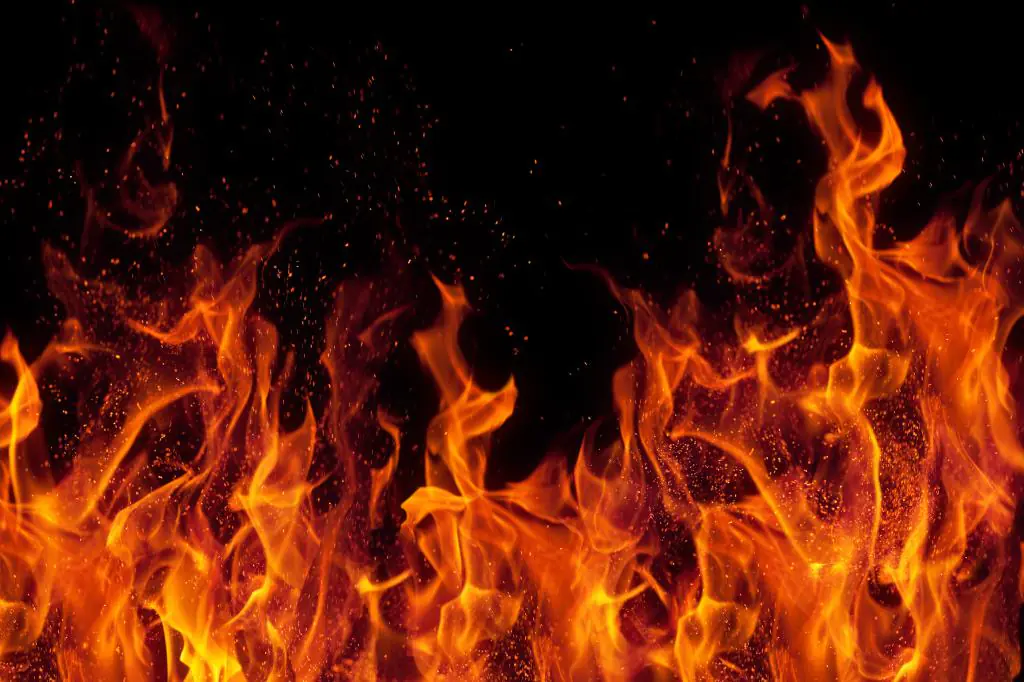
- 1st degree - short-term thermal exposure. These burns are easy to treat and have a favorable prognosis.
- 2nd degree - a consequence of exposure to flame, hot steam or smoke. Very often, 2nd degree is a combination of thermal and chemical burns. With this lesion, the prognosis is more serious; treatment should be started immediately to avoid serious consequences.
- The danger of the 3rd degree is acute emphysema and prolonged pneumonia. The lesions in this injury are necrotic and fibrinous in nature. The forecasts in this case are more depressing.
Incorrect actions when providing first aid to a person who has suffered a lung burn from steam can lead to a worsening of the current situation. Timely and competent assistance will help avoid serious consequences and lead to a speedy recovery.
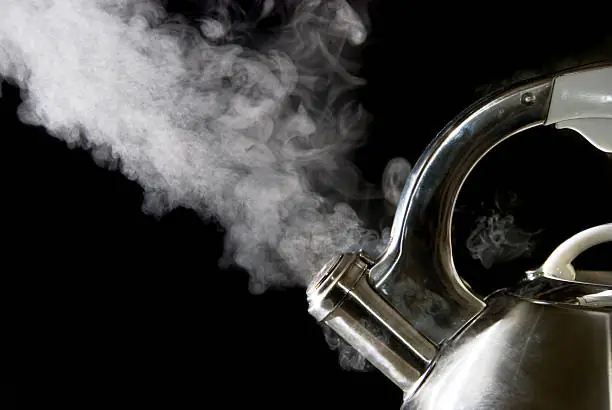
Sequence of actions for burns of the respiratory tract by hot steam:
- eliminate the source of the problem;
- rinse your mouth with cold water;
- drink a few sips of cool water;
- if an oxygen mask is available, put it on the victim;
- call an ambulance.
Chemical burn
It is possible to get a chemical burn to the lungs and other organs of the respiratory system when the skin or mucous membrane is exposed to certain caustic chemicals:
- acids;
- alkalis;
- salts of heavy metals, etc.
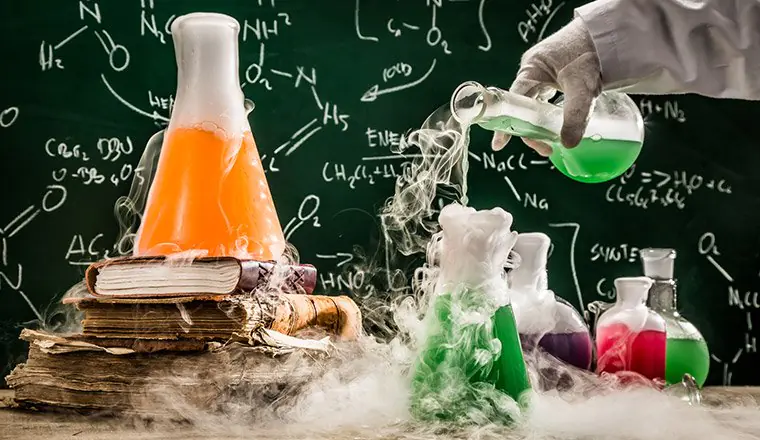
The severity of the injury depends on many factors:
- nature of the substance;
- its concentration;
- his temperature;
- duration of contact.
Acids
When any acid comes into contact with the skin, a so-called dry scab appears, preventing the penetration of the dangerous substance into the body. Depending on the type of chemical, it may have different colors.
Acid Scab color Sulfuric dark gray Hydrochloric sapphire gray Nitric yellow Acetic, carbolic greenLung burns are guaranteed if chlorine leaks in production. In this case, urgent evacuation of people from the poisoned premises is necessary. Chlorine vapor can cause shortness of breath, paroxysmal cough and swelling of the nasopharynx.
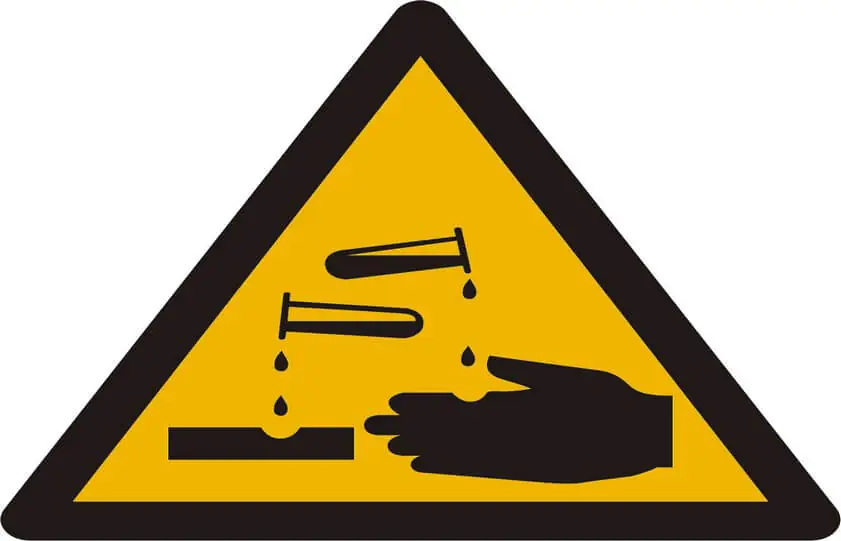
Providing first aid for poisoning with chlorine vapors:
- thoroughly rinsing the face, mouth and eyes with a weak soda solution;
- instilling vegetable oil into the eyes (preferably olive oil, but in the absence of the latter, sunflower oil is also suitable);
- for severe pain, you can give an intramuscular injection of analgin.
All manipulations must be carried out with gloves, and when the ambulance team arrives, you must inform about the measures taken and the drugs administered.
Treatment
Treatment of burns of the lungs and other organs of the respiratory system (emergency care):
- administration of painkillers;
- washing the face;
- mouth rinse;
- in the presence of acute pain, the oral cavity is treated with lidocaine;
- oxygen mask.
Drug therapy is aimed at:
- relief of laryngeal edema;
- elimination of pain syndrome;
- ensuring the outflow of mucus from the lungs;
- preventing pneumonia.

The following groups of drugs are commonly used:
- anti-inflammatory;
- decongestants;
- painkillers;
- antibacterial.
In addition, the patient must remain silent for two weeks and regularly inhale medications.
Forecast
It is quite difficult to make a prognosis for a burn, because it depends on many factors:
- degree of damage;
- age;
- general health;
- presence of concomitant diseases, etc.
With timely treatment, a 1st degree lesion does not pose a serious threat to the body, but what are the consequences of a 2nd and 3rd degree lung burn? They often lead to negative consequences, such as chronic pneumonia, pulmonary or heart failure, or even bronchial necrosis. The latter complication always leads to death.
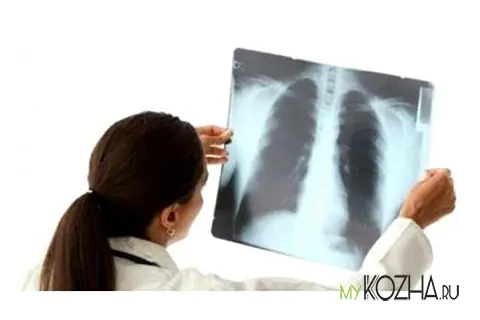
A lung burn refers to damage to internal organs, which, unlike superficial burn injuries, occurs in a more severe form and can lead to quite serious, sometimes irreversible, consequences. Such a burn can occur when inhaling hot air, combustion products or chemical vapors. Inhalation damage to the lungs does not occur in isolation, but is always combined with other burns of the respiratory tract: the mucous membrane of the nose, larynx and trachea. Such injuries are diagnosed in 15-18% of burn patients admitted to the hospital.
An injured person who has suffered a burn to the lungs should be immediately taken to the hospital for first aid and surgical treatment. Often a burn to the respiratory system, combined with significant damage to the skin, leads to death. Despite timely medical care, many patients, whose body cannot cope with the injuries caused, die within the first three days after receiving the injury. The resulting necrosis and pulmonary edema leads to cessation of respiratory function.

Difficult diagnosis of lung burns aggravates the situation. In some cases, inhalation lesions are completely asymptomatic while maintaining high laboratory values. Such damage can be suspected after collecting a complete medical history and clarifying all the circumstances of the injury. Clinical examination data can be used as an indirect diagnostic method. Damage to the lungs may be indicated by the localization of burns on the surface of the chest, neck and face, as well as traces of soot on the tongue and in the nasopharynx. The victim often begins to choke, there may be a change in voice, vomiting blood, coughing with sputum containing soot particles.
All these symptoms will not allow us to determine the extent and depth of the lesion. However, they are the ones who will help doctors make a preliminary diagnosis and provide the necessary medical care in a timely manner. Treatment of such burns begins at the scene with careful lavage of the airway and provision of oxygen. If edema, hypoxemia, obstruction occurs, as well as if it is impossible to clear the airways from mucus and increased intracranial pressure resulting from cerebral hypoxia, ventilation support and intubation are prescribed. Burn injury to the lungs increases the victim's fluid requirement by 50%. With inadequate infusion therapy, the severity of the burn injury can worsen, causing the development of various complications. Antibiotic treatment is used only in rare cases where there are clear signs of infection.

Thermal lesions
Thermal inhalation lesions of the lungs, as a rule, occur during a fire that occurs in a confined space, for example, in a vehicle, small living or working space. Such injuries are often combined with severe skin burns, cause acute respiratory failure and can lead to the death of the victim. In the first few hours, the clinical picture is characterized by uncertainty.
Defeat can be assumed based on several signs and manifestations:
- Impaired consciousness;
- Dyspnea;
- Hoarseness of voice;
- Cough with black sputum;
- Cyanosis;
- Traces of soot on the mucous membrane of the throat and tongue;
- Burnt back of the throat.
Victims are hospitalized in a specialized burn center or intensive care unit of the nearest multidisciplinary hospital. A thermal burn can lead to complications such as the development of respiratory failure or the occurrence of acute lung injury syndrome. In this case, in addition to the main treatment, respiratory support such as artificial ventilation, nebulizer therapy and an innovative technique of extracorporeal membrane oxygenation may be required.

Chemical lesions
The main substances whose vapors can cause a chemical burn to the respiratory tract include various acids, alkalis, volatile oils and salts of heavy metals. Cyanide and carbon monoxide are the most toxic to the human body. When oil products, rubber, nylon, silk and other materials are burned, ammonia and polyvinyl chloride are released, which are a source of chlorine, hydrochloric acid and aldehyde. All these toxic substances can cause burns to the respiratory tract and lungs.
The severity of the lesions can vary and depends on several factors:
- Duration of exposure;
- Degrees of concentration;
- Temperatures;
- The nature of chemicals.
The harmful effects of aggressive agents will be more pronounced at high concentrations of solutions. However, even weakly concentrated substances with prolonged exposure to humans can cause lung burns.
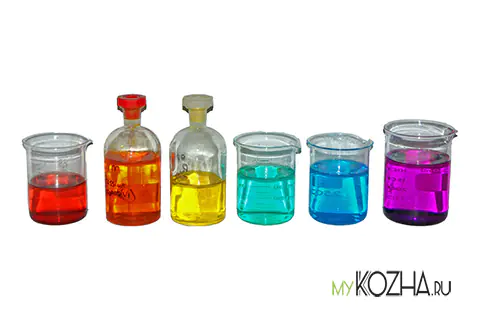
Unlike thermal damage, a chemical burn has a less pronounced clinical picture. Characteristic symptoms include severe pain immediately after the injury, difficulty breathing, nausea, dizziness and loss of consciousness. A burn disrupts the normal functioning of the lungs and without timely treatment can lead to the development of respiratory distress syndrome, acute burn toxemia and burn shock. The last of these conditions is life-threatening.
Chemical burns of the respiratory tract rarely lead to death in patients. However, if any characteristic symptoms appear, you should call an ambulance. Doctors will quickly relieve pain and restore breathing and blood circulation. All these actions will help prevent the development of burn shock.
In the first hours after injury, it is advisable to carry out inhalations. For these purposes, in case of an acid burn, a weak alkali solution is used, respectively, in case of an alkali burn, a weak acid solution is used. In addition to inhalation therapy, anti-inflammatory and hyposensitizing therapy are actively used. Since damage to the respiratory tract leads to injury to the vocal cords, all victims are advised to remain silent for the first two weeks.
Thermal and chemical burns of the lungs can occur from inhalation of flame, smoke, hot air and vapors saturated with aggressive chemical elements. Such injuries are often life-threatening and often fatal. To identify all possible internal injuries and prompt treatment, victims are immediately taken to specialized medical institutions.
Medical expert article
A burn of the respiratory tract is damage to the mucous tissues of the respiratory organs, which develops at the moment of inhalation of a damaging agent: steam, chemical fumes, hot smoke, etc. The clinical course and condition of the victim depend on the area and depth of the damage, as well as on the quality and timeliness of emergency care provided .
[1], [2], [3], [4], [5], [6]
ICD-10 code
Epidemiology
The greatest number of cases of burns of the respiratory tract was observed during wars: during these periods, the frequency of thermal injuries increased significantly, from 0.3% to 1.5% of the total number of victims. This is due to the massive use of explosives, flammable mixtures and thermal weapons.
In modern times, the frequency of burns, unfortunately, is increasing. For example, in Israel alone, as a result of military conflicts, burn injuries ranged from 5% to 9%. When using tanks and motorized transport, the percentage can be increased to 20-40%.
In domestic conditions, the number of burns of the respiratory tract is much lower and amounts to less than 1% of all burn cases.
[7], [8], [9], [10], [11], [12], [13], [14], [15]
Causes of respiratory tract burns
A respiratory burn can be caused by:
- chemical fumes;
- high temperature.
The most severe are mixed burns caused by a combination of chemical and thermal effects.
Chemical burns can occur at work if containers with evaporating liquid are accidentally damaged. Acute inhalation of such fumes often leads to internal tissue damage. In addition, it is possible to inhale acrid smoke during a fire. If such smoke contains phosgene, hydrocyanic or nitrous acid, or other toxic substances, then a respiratory burn is inevitable.
Thermal damage to the respiratory system occurs when inhaling hot steam or air, or even flames.
[16], [17], [18], [19], [20]
Pathogenesis
The pathogenesis of respiratory tract burns consists of thermal or chemical destruction of mucous and submucosal tissues with disruption of their function. The degree of damage may vary depending on the temperature and duration of exposure, and the depth of inhalation when the damaging agent enters. If the burn is significant, deep tissue necrosis may occur, which can cover several layers.
Often, burn damage is accompanied by an inflammatory process, with impaired vascular permeability and swelling, which further complicates breathing function.
[21], [22], [23], [24], [25], [26], [27], [28]
Symptoms of a burn in the respiratory tract
The first signs of a respiratory burn appear immediately after exposure to a damaging factor. Circumstances such as a fire in an apartment, utility room, mine, in transport, as well as short-term exposure to steam or open fire (especially if there is also a burn to the chest, neck or facial area) may indicate the presence of a burn.
A burn to the upper respiratory tract is accompanied by severe pain in the throat and chest. The pain intensifies when you try to inhale, so breathing is difficult. Body temperature may increase.
Visually, you can detect damage to the skin in the lip area, and the mucous membranes of the oral cavity are swollen and hyperemic. In severe cases, as a result of damage to the outer laryngeal ring, laryngeal stenosis and suffocation may develop.
Cough, expectoration, unrecognizable voice
Stage I (burn of the oral mucosa, epiglottis, larynx).
Stage II (burn damage of II and III degrees of the respiratory organs).
Unexpressed, dry wheezing.
A large number of dry wheezing, which after 2-3 days becomes moist and turns into crepitus.
Frequent dry cough, sputum is released from 2-3 days. The voice is hoarse, aphonia is possible.
Often occurs within 2-3 days.
Occasionally, has a favorable course.
Develops in almost all cases. The current is severe.
[29], [30], [31], [32], [33]
Forms
Depending on which factor caused damage to the respiratory system, various types of such injuries are distinguished. All of them differ, first of all, in clinical symptoms.
- A chemical burn of the respiratory tract can be suspected in the simultaneous presence of chemical damage to the skin of the neck, face, chest, and oral cavity. The victim often has trouble breathing, his voice changes, he may vomit blood, and cough with dirty discharge.
- A burn of the respiratory tract by chlorine is accompanied by a sharp burning sensation in the throat, nasal cavity and behind the sternum. At the same time, lacrimation, severe frequent cough and toxic rhinitis may occur. The mucous membrane of the respiratory tract remains irritated for several days after the cessation of the damaging factor.
- An acid burn to the respiratory tract can be determined by the condition of the back of the throat. In most cases, the mucous membrane on it first turns white or yellow, then becomes dirty green and then almost black. A crust forms on the surface, which bleeds when rejected.
- Burns of the respiratory tract by paint vapors cause swelling of the nasopharynx, sneezing, and coughing. The victim complains of shortness of breath and difficulty breathing. The skin is pale, the eyes are red. Head pain and dizziness often occur.
- Thermal burn of the respiratory tract is accompanied by shortness of breath, bluish skin, and voice changes. Upon examination, you can notice obvious burn damage to the pharynx and upper palate. The patient exhibits anxiety and fear, which is often associated with severe pain and difficulty breathing. In severe cases, loss of consciousness occurs.
- A burn to the respiratory tract during a fire is the most typical. This type of injury is characterized by damage to the lips, neck, and oral cavity. Upon examination, a burnt inner surface of the nostrils is observed. When examining secretions from the bronchi and nasal cavity, traces of soot can be detected.
- Steam burns to the respiratory tract are usually accompanied by laryngospasm, without significant damage to the trachea, bronchi and lungs. The fact is that when inhaling hot steam, a protective reaction is triggered in the form of involuntary contraction of the muscles of the larynx. Therefore, this type of burn can be considered the most favorable.
[34], [35], [36], [37], [38]
Complications and consequences
Light burns of the respiratory tract, stage I. usually do not cause negative consequences and are cured without any problems.
At II or III stage. burn injury, complications may develop with rather negative prognoses.
Among the most unfavorable complications are the following:
- the development of emphysema, a chronic pulmonary disease that is accompanied by dilation of small bronchioles and disruption of the integrity of the interalveolar septa;
- changes in the structure of the vocal cords;
- chronic pneumonia;
- failure of pulmonary and cardiac function;
- renal failure;
- phenomena of necrosis and fibrosis in the trachea and bronchi, which can ultimately lead to death.
[39], [40], [41], [42], [43], [44], [45]
Diagnosis of respiratory tract burns
Typically, diagnosing a burn injury to the respiratory tract does not cause problems. It is much more important and difficult to assess the depth and extent of internal tissue damage. In most cases, the diagnostic measures used are based on this.
- Laboratory tests - biochemistry and general blood test, general urine test - indicate the development of anemia and deterioration of kidney function. However, such changes do not occur immediately, but only 2-3 days after the injury.
- Instrumental diagnosis is carried out using laryngoscopy and bronchoscopy. Bronchoscopy is recognized as a more informative diagnostic method for burns, which allows you to safely and urgently check the condition of all parts of the trachea and bronchi. Bronchoscopy makes it possible to clarify the nature of the lesion: it can be catarrhal, necrotic, erosive or ulcerative burn of the respiratory tract.
- Differential diagnosis is carried out between chemical and thermal burns of the respiratory system, as well as between damage to the mucous membrane of the respiratory and digestive tracts.
[46], [47], [48], [49], [50], [51]



